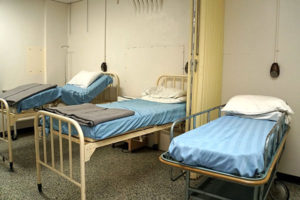
As many hospitals have struggled with a deluge of COVID-19 patients, which at times has prompted patients with other severe conditions to avoid hospitals if they feel they can, there’s a fear that non-COVID deaths will increase during the pandemic. A recent paper in BMJ looks at what the data so far suggests while noting we don’t know enough yet to draw conclusions.
John Appleby, chief economist at the Nuffield Trust, published a paper in BMJ on April 24, looking at possible trends in non-COVID deaths in England. Although the data cannot be extrapolated to the U.S. — that country’s health care system and its response to the pandemic are different — what’s been observed may be worth investigating in the U.S. as well. As reporters cast around for stories not directly related to COVID-19 but tangentially affected, asking researchers about deaths from other causes is a potential story idea.
In England, visits to the National Health Services emergency departments dropped 29 percent in March, and admissions dropped 23 percent, compared to the same period in 2019. The concern is that people are staying away who do need to come to the emergency department for a serious non-COVID issue, such as chest pain.
The data also reveals a higher number of deaths — nearly 8,000 more — for the week ending April 10 compared to the same period in 2019. Obviously, the bulk of these are COVID-19 deaths, but only 6,213 COVID-19 deaths were recorded for that week.
Does that mean COVID-19 deaths are being undercounted or underrecognized, or that more people are dying of non-COVID-19 causes? It’s among the big questions that should be answered. It’s possibly a bit of both. A substantial proportion of the excess deaths are occurring at home, but these may include COVID-19 cases that did not go to the hospital.
It also may be tough to disentangle those numbers given the unexpected ways some are dying with COVID-19, such as strokes seen in otherwise healthy young and middle-aged adults. For now, Appleby writes, we don’t know who didn’t go to the emergency department and what happened to them.
“Many, presumably, will have self-treated or used other services, such as general practice,” he writes. “But these are large falls, and the fear would be that some who didn’t attend emergency departments will have died, or may die in the coming months, when timely treatment may have prevented their death.”
It will, therefore, be interesting to look not only at acute deaths that could have been prevented with timely emergency treatment but deaths from chronic or undiagnosed illnesses that might have been prevented with diagnostic or preventive care via the emergency department.
“For the moment, it seems impossible properly to answer concerns about the wider effect current measures might be having on the health of the population,” Appleby writes. “The data are incomplete, too uncertain, and too fast-moving to support any reliable conclusions.”
Undoubtedly in future months, studies will try to determine how many COVID-19 deaths were undercounted, and how many other deaths here and around the world were “collateral damage” as the pandemic used up healthcare resources and potentially frightened people from seeking care.







